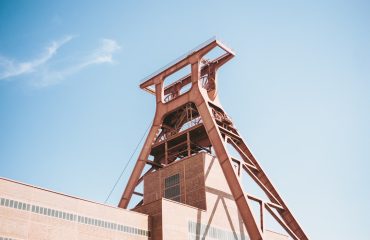API 5L is a globally recognized standard for line pipe, crucial for the safe and efficient transportation of oil and gas. Understanding its intricacies is vital for engineers, contractors, and anyone involved in the pipeline industry. This comprehensive guide will delve into the key aspects of API 5L, providing a clear and concise explanation of its specifications, applications, and importance.
Understanding API 5L Specifications and Grades
API 5L, published by the American Petroleum Institute, specifies the requirements for seamless and welded line pipe intended for use in oil and gas pipelines. The standard covers various aspects, including material properties, manufacturing processes, testing procedures, and dimensional tolerances. A crucial element is the grading system, which categorizes pipes based on their strength, ductility, and weldability. These grades are denoted by letters (e.g., X42, X52, X65, X70, X80, and L80) with the number representing the minimum specified yield strength in thousands of pounds per square inch (ksi). Higher numbers indicate greater strength. The ‘X’ denotes seamless or welded pipe suitable for high-pressure applications, while ‘L’ designates pipes typically used for lower pressure applications. The choice of grade depends on the specific pipeline’s operating pressure, diameter, and environmental conditions.
API 5L Pipe Manufacturing Processes: Seamless vs. Welded
API 5L pipes are manufactured using two primary processes: seamless and welded. Seamless pipes are produced by piercing and rolling a solid steel billet, resulting in a continuous, homogeneous structure without welds. This process generally leads to superior strength and resistance to cracking. Welded pipes, on the other hand, are fabricated by joining two or more steel plates using various welding techniques like submerged arc welding (SAW) or electric resistance welding (ERW). While welded pipes can be cost-effective, they require rigorous quality control to ensure the weld’s integrity. API 5L specifies strict requirements for both manufacturing processes, ensuring the final product meets the required strength and quality standards. The choice between seamless and welded often depends on factors like diameter, wall thickness, and cost considerations.
Critical Testing and Inspection Procedures in API 5L Compliance
Rigorous testing and inspection are integral to API 5L compliance. Manufacturers must perform various tests on the pipes throughout the production process to verify that they meet the specified requirements. These tests include:
- Tensile testing: Determines the pipe’s tensile strength, yield strength, and elongation.
- Bend testing: Assesses the pipe’s ductility and ability to withstand bending without fracturing.
- Hydrostatic testing: Checks the pipe’s ability to withstand internal pressure without leaking or bursting.
- Flattening test: Evaluates the pipe’s resistance to deformation under compressive forces.
- Nondestructive testing (NDT): Techniques like ultrasonic testing (UT) and radiographic testing (RT) are used to detect internal flaws and weld defects without damaging the pipe.
These tests ensure that the pipes meet the specified quality and safety requirements before they are used in pipelines. Third-party inspections are often employed to ensure independent verification of compliance.
Applications of API 5L Line Pipes: Across Diverse Industries
API 5L line pipes find widespread application in the transportation of various fluids, primarily in the oil and gas industry. They are crucial components in onshore and offshore pipelines, transporting crude oil, natural gas, refined petroleum products, and other fluids. Beyond the energy sector, API 5L pipes are also used in other industries where high-strength, reliable piping is required, including water transmission systems, chemical processing plants, and industrial applications requiring high-pressure fluid transfer. The versatility and stringent quality standards of API 5L pipes make them a reliable choice across numerous applications.
Ensuring API 5L Compliance: Importance and Best Practices
Compliance with API 5L is paramount for ensuring the safety and reliability of pipelines. Non-compliance can lead to serious consequences, including leaks, ruptures, environmental damage, and potential loss of life. To ensure compliance, companies must follow strict procedures throughout the entire process, from material selection and manufacturing to testing and inspection. Proper documentation, traceability, and adherence to quality control measures are essential. Regular audits and inspections by qualified personnel are crucial for identifying and rectifying any potential non-compliance issues. Investing in quality control and adhering to API 5L standards is not merely a regulatory requirement; it is a crucial aspect of responsible and sustainable operations in the pipeline industry.
Understanding API 5L is essential for anyone involved in the design, construction, and operation of pipelines. This comprehensive overview provides a solid foundation for navigating the complexities of this critical standard. By adhering to these standards, the industry ensures the safe and efficient transportation of vital resources globally.




